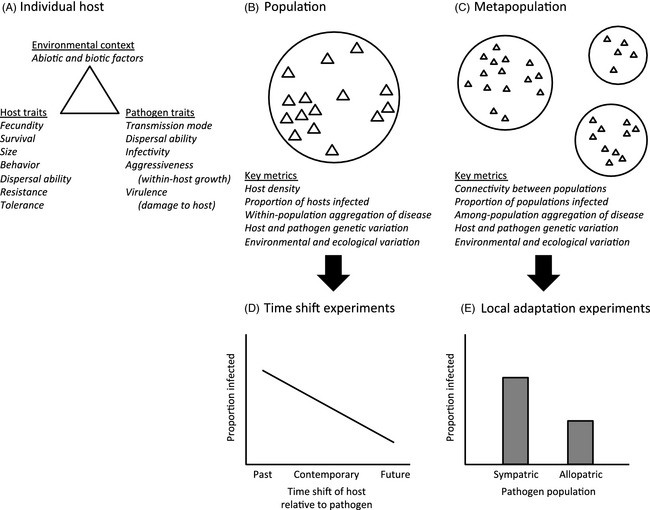Figure 1.

Schematic of hierarchical spatial scales of host–parasite interactions (A–C), and expected results from tests of parasite adaptation measured over time (D) or space (E). (A) The risk and consequences of infection for an individual host depend on the interaction between host traits, pathogen traits, and the surrounding abiotic and biotic environment. (B) The prevalence and spatial distribution of disease in a population, and ecological and evolutionary consequences of infection, are shaped by variation in host traits, pathogen traits and environmental factors over small spatial scales. (C) Within‐host and among‐host processes interact with larger‐scale environmental variation to determine the prevalence and spatial structure of disease at the metapopulation level. Cartoon representations of results of from (D) a time shift experiment in a single population, where the pathogen is most infective to hosts from the past and maladapted to hosts from the future and (E) a local adaptation experiment in a metapopulation, in which the pathogen is locally adapted to sympatric host populations.
